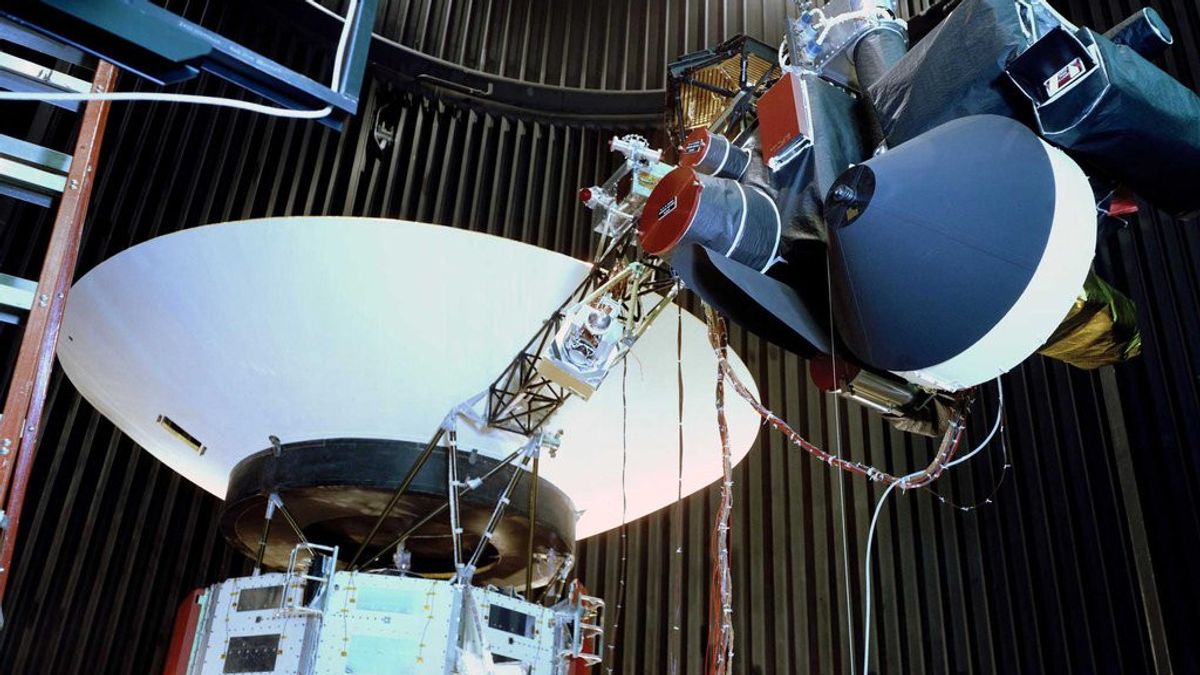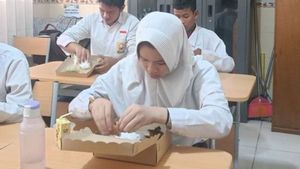JAKARTA - The United States Aeronautics and Space Agency (NASA) has again found a way for the Voyager 2 spacecraft or probe to continue its operations even longer.
Launched in 1977, Voyager 2 is currently more than 12 billion miles from Earth, using five science instruments to study interstellar space.
To help keep the instrument operating despite reduced power supply, the aging spacecraft has started using a small reservoir of reserve power set aside as part of the onboard safety mechanism.
The move will allow the mission to delay closing science instruments until 2026, not this year. However, turning off science instruments will not end the mission.
After turning off one instrument in 2026, Voyager 2 will continue to operate four science instruments until a declining power supply requires the others to be turned off.
If Voyager 2 stays healthy, NASA's engineering team will anticipate the mission potentially continuing in the years to come.
Voyager 2 and his twin Voyager 1 are the only spacecraft ever operating outside the heliosphere, a protective bubble of particles and a magnetic field produced by the Sun.
The probe helps scientists answer questions about the shape of the heliosphere and its role in protecting the Earth from energetic particles and other radiation found in interstellar environments.
Voyager's science data is getting more and more valuable away from the Sun, so we are very interested in keeping as many science instruments operational as possible," said Voyager project scientist at NASA's Jet Propulsion, Linda Spilker.
Both Voyager probes power themselves with the Radioisotopic Thermoelectric Generator (RTG), which converts heat from decomposed plutonium into electricity.
The continuous process of decay means generators generate less power each year. So far, the power supply decline does not affect the science output of the mission, but to compensate for the loss, engineers have turned off heating and other systems that are not essential to keep the spacecraft flying.
In seeking ways to avoid turning off Voyager 2's science instruments, NASA's engineering team looked closely at safety mechanisms designed to protect instruments if spacecraft voltages with electric power changed significantly.
Since voltage fluctuations can damage instruments, Voyager is equipped with a voltage controller that triggers backup circuits in such events. Circuits can access a small amount of power from the RTG set aside for this purpose.
Instead of storing that power, the mission will now use it to keep science instruments operating.
While the spacecraft's voltage will not be strictly regulated, even after more than 45 years on flight, the electrical system on both probes remains relatively stable, minimizing the need for safety nets.
NASA's engineering team can also monitor voltages and respond if they fluctuate too much. If the new approach works well for Voyager 2, the team can also apply it to Voyager 1.
"Voltage of variables poses a risk to the instrument, but we have determined that it is a small risk, and the alternative offers a huge reward for being able to keep science instruments on longer," Voyager's project manager at JPL said.
"We've been monitoring the spacecraft for a few weeks, and it looks like this new approach worked," he added.
Voyager's mission was originally scheduled to last only four years, sending both rides past Saturn and Jupiter.
But NASA extended its mission so Voyager 2 could visit Neptune and Uranus, it was still the only spacecraft ever to meet ice giants.
In 1990, NASA extended its mission again, this time with the aim of sending rides outside the heliosphere. Voyager 1 reached that limit in 2012, while Voyager 2 ( traveled slower and in a different direction than his twin) achieved it in 2018.
The English, Chinese, Japanese, Arabic, and French versions are automatically generated by the AI. So there may still be inaccuracies in translating, please always see Indonesian as our main language. (system supported by DigitalSiber.id)









